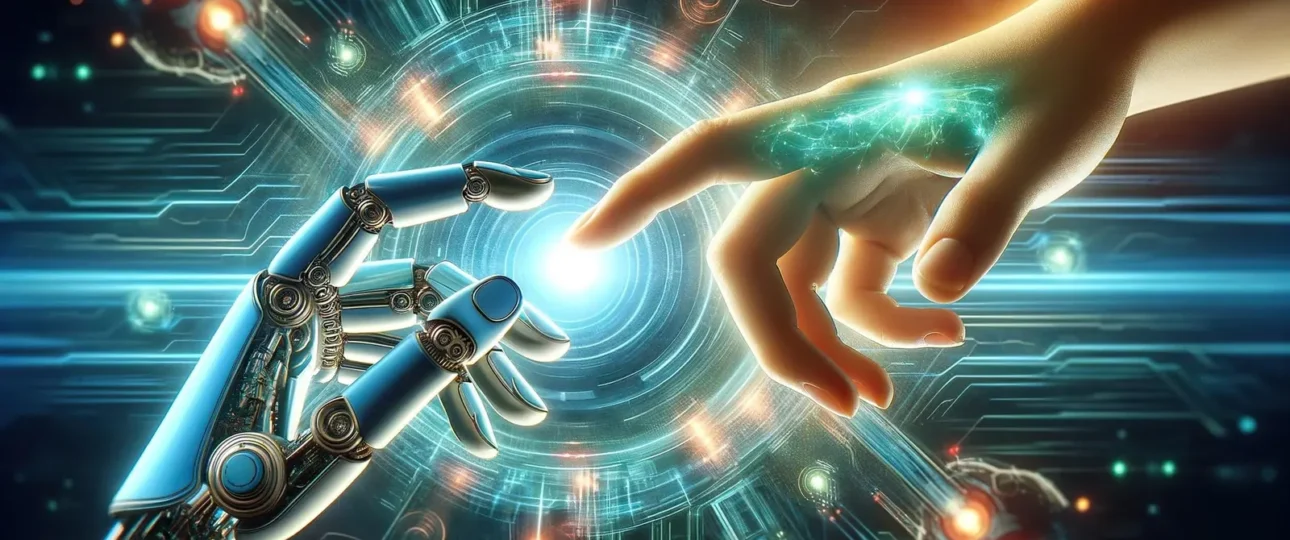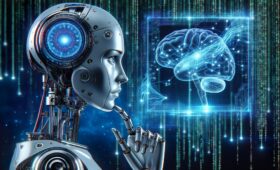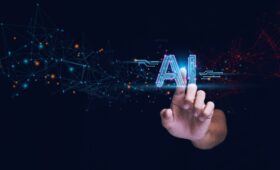As Artificial Intelligence (AI) continues to advance, it raises a compelling question: Can AI replace humans? With AI increasingly taking on tasks traditionally performed by humans—ranging from simple automation to complex decision-making—the idea of AI replacing humans in various sectors is becoming a topic of both fascination and concern. But while AI has made impressive strides in many areas, it’s crucial to consider the limitations, ethical implications, and the irreplaceable qualities of human beings.
The Potential for AI to Replace Humans
AI has already shown its potential to outperform humans in several specific tasks, particularly in fields that involve repetitive, data-driven work. In areas like manufacturing, logistics, customer service, and even healthcare, AI systems and robots are being deployed to increase efficiency, reduce costs, and minimize human error.
1. Automation in the Workforce
In industries like manufacturing, AI and robotics have been replacing manual labor for decades. Machines can now perform repetitive tasks such as assembly line work, sorting, and packaging faster and more efficiently than humans. Additionally, AI systems can optimize production schedules, handle inventory management, and even detect defects in products—all of which previously required human workers.
In customer service, AI-powered chatbots and virtual assistants are able to answer inquiries, process transactions, and troubleshoot problems, often providing faster and more consistent responses than human agents. This trend is particularly prevalent in industries like e-commerce, telecommunications, and banking.
2. AI in Complex Tasks: Healthcare and Finance
AI is also making inroads in more complex fields such as healthcare and finance. In healthcare, machine learning algorithms are already being used to diagnose diseases, interpret medical imaging, and even suggest treatment plans. AI tools like IBM’s Watson have been helping doctors make faster, more accurate decisions based on vast datasets.
Similarly, in finance, AI systems are capable of analyzing market trends, detecting fraud, and automating trading decisions. These AI tools are designed to handle vast amounts of data at speeds that no human could match, thus enabling more precise predictions and improving financial decision-making.
3. AI in Creative Fields
While it may seem far-fetched, AI is even making waves in creative industries. AI has been used to generate art, music, and even write articles. For example, AI tools can compose music based on certain patterns or create paintings that mimic the styles of famous artists. In writing, AI can produce blog posts, reports, and even poetry, with some tools already used for content generation in marketing and publishing.
The Limitations of AI
Despite its potential, AI is far from being able to replace humans entirely. There are several key areas where AI still falls short of human capabilities.
1. Emotional Intelligence
One of the most significant limitations of AI is its lack of emotional intelligence. While AI can analyze data and simulate conversations, it cannot truly understand or experience human emotions. Empathy, social interaction, and emotional nuance are deeply ingrained in human behavior and are critical in areas like counseling, healthcare, education, and leadership.
For instance, while an AI can assist in diagnosing a patient’s illness, it cannot comfort a patient or provide the emotional support that a human healthcare provider can. Similarly, in customer service, while AI can resolve technical issues, it cannot replace the empathy and human connection a person feels when talking to a customer service representative who understands their frustrations.
2. Creativity and Innovation
AI can mimic creativity in many forms, but it cannot create entirely new ideas or innovations in the way humans can. Human creativity often involves thinking outside the box, connecting disparate ideas, and coming up with novel solutions that go beyond patterns in data. AI is limited to the data it’s trained on and tends to operate within predefined rules and patterns.
While AI may be able to generate music or artwork, it does not have the personal experiences, cultural context, or unique perspectives that drive human creativity. As such, AI’s contributions to creative fields are likely to remain as complementary rather than as a full replacement for human artists, writers, and innovators.
3. Ethics and Moral Decision-Making
AI lacks the ability to make complex moral and ethical decisions, which are often required in fields like law, healthcare, and governance. While AI can provide data-driven insights, it does not have a moral compass or the ability to weigh the ethical implications of its actions.
For example, AI cannot understand the full complexity of human rights or social justice. In healthcare, there may be situations where a doctor needs to consider the emotional and psychological well-being of a patient in addition to medical facts, something that AI, even with advanced algorithms, cannot replicate.
Human and AI Collaboration: The Future of Work
Rather than thinking of AI as a direct replacement for humans, the future seems to be moving toward a more collaborative approach. AI is expected to enhance human abilities and take over repetitive or dangerous tasks, allowing humans to focus on more complex, creative, and emotionally nuanced work.
1. Augmentation, Not Replacement
AI can augment human work by providing real-time data analysis, automating routine tasks, and offering suggestions for decision-making. This collaboration can lead to greater efficiency, better outcomes, and enhanced job satisfaction. For example, doctors can use AI to help diagnose diseases, but they still provide the compassionate care and make final treatment decisions.
In industries like customer service, AI chatbots can handle basic inquiries, but human agents are needed for more complex problems or to provide a personal touch. Similarly, AI in creative industries can generate ideas or assist in the creative process, but human artists are essential for crafting original and deeply meaningful work.
2. Reskilling and Adaptation
As AI takes over certain tasks, humans will need to adapt by acquiring new skills that complement AI technology. This shift in the workforce will require a focus on reskilling and education, ensuring that workers are prepared for roles that require emotional intelligence, creativity, problem-solving, and other uniquely human qualities.
Conclusion
While AI is undoubtedly powerful and capable of performing certain tasks more efficiently than humans, it is unlikely to replace humans entirely. AI lacks the emotional intelligence, creativity, and moral reasoning that are central to many aspects of human life and work. Instead, AI will likely serve as a tool that complements and enhances human abilities, allowing us to focus on more complex, creative, and meaningful work.
The future is not about AI replacing humans, but about humans and AI working together to achieve more than either could alone. By embracing AI’s potential while acknowledging its limitations, we can build a future where both humans and AI coexist and thrive in harmony.




